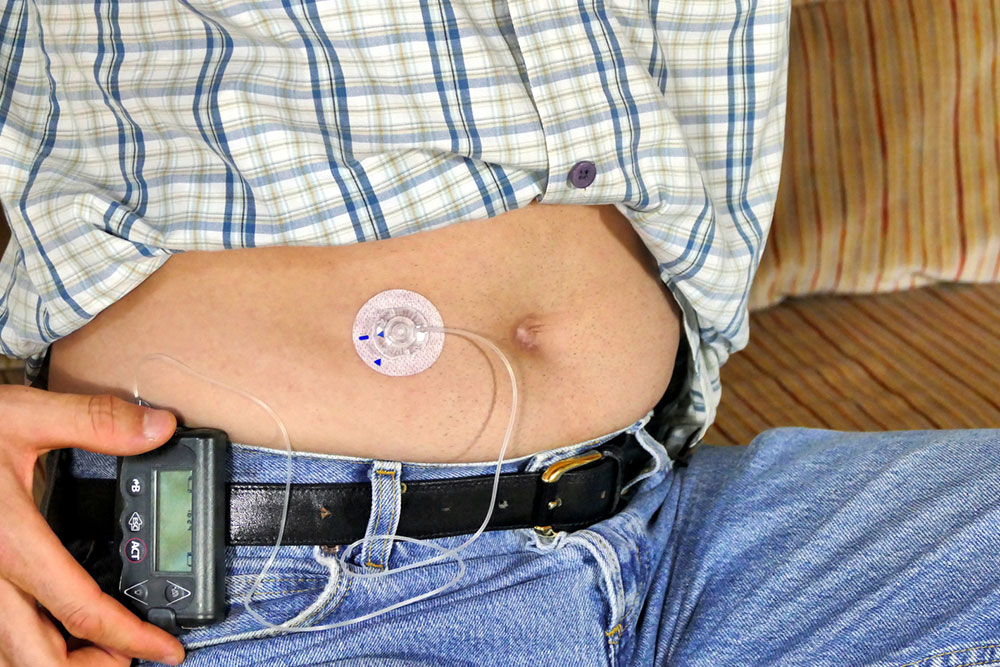Insulin Pumps for Type 1 Diabetes – Types and Benefits
Type 1 diabetes is a chronic condition characterized by the pancreas producing little to no insulin due to an autoimmune response. While its onset commonly occurs during childhood or adolescence, it can develop at any age. The main form of treatment involves insulin therapy, which is administered through an insulin pump and other devices. Continuous glucose monitors (CGMs) are also used to monitor blood sugar levels for accurate insulin management.
What is an insulin pump?
An insulin pump is a wearable, semi-automated device that delivers a steady supply of insulin. This device is typically the size of a juice box and delivers fast-acting insulin underneath the patient’s skin.

How does it work?
Insulin pumps are designed to mimic the insulin-releasing function of the pancreas. It can be programmed to deliver small continuous doses of insulin to the patient. The dosage changes based on the time of the day, as the body requires different amounts of basal insulin throughout 24 hours. The patient might need to change the basal insulin amount as their routine and lifestyle changes.
Alternatively, the pump can also deliver bolus doses of insulin. To do this, the patient must manually enter data about their current blood sugar levels and carbohydrate intake. Once this data is entered, the pump calculates the amount of bolus insulin required. The patients can then confirm the recommended dosage or adjust it before the insulin is delivered.
Different types of insulin pumps
Insulin pumps can be primarily divided into two main types based on the presence or absence of tubes.
Tubed insulin pumps
Also referred to as a tethered insulin pump, this device has a thin tube connecting the pump to the cannula (a flexible plastic tube) that delivers insulin under the patient’s skin. The pump has a display screen for the patient to monitor the functions, view readings, and enter data. Based on the quality of the pump, the batteries or the device might need to be replaced or recharged. The pump has an insulin reservoir to store insulin. Usually, the type of pump determines the quantity of insulin held by the reservoir. But, patients can fill this reservoir once they know how much insulin they might need for two to three days. This type of pump can easily be clipped to the patient’s clothing or stored in their pocket.
This pump comes with a tube that is a few inches long, connecting the reservoir and the infusion site. In most insulin pumps, these elements need to be replaced quite frequently. While doing so, patients should ensure they use new infusion sets, tubing, and other parts.
Whether the device is waterproof or not, patients can still disconnect the tubed pump before showering or swimming and reconnect the pump and the tubing to the infusion site.
Tubeless insulin pumps
Patch or tubeless pumps are another option for patients with type 1 diabetes in their 20s. While a cannula is present in this type of pump, no other tubing is involved. In this type, the insulin reservoir and the cannula are attached as a single pod fixed to the patient’s skin with the help of an adhesive patch. Patients can monitor the operations with a wireless controller. Unlike tubed pumps, these pods can be used only once. But they can be changed every two or three days or if the reservoir runs out of insulin. Once the pod runs out of supply, the pump needs to be attached to a different site, like the belly, upper arm, or thigh, to avoid complications. An added advantage of tubeless or patch pumps is that they are waterproof and do not need to be disconnected when showering or swimming.
Benefits of an insulin pump
Insulin pumps are a crucial part of treatment for people with diabetes, particularly type 1 and type 2 diabetes. Patients with type 1 diabetes commonly use insulin pumps for effective insulin management, irrespective of their age. In contrast, for type 2 or type 3c diabetes, only specific patients may require pumps.
- The pump allows patients and healthcare providers to calibrate and recalibrate insulin doses based on the patient’s meals, activity levels, and the kind of exercise included in the routine.
- Due to the CGM technology integrated with an insulin pump, patients can simultaneously record their blood glucose levels. This provides better and more timely readings so patients can recognize their body activity and calculate their next dose in time.
- The pump provides insightful readings and additional data, which can be discussed with an endocrinologist during follow-up appointments. The patient can also download this data and share it with their doctor.
- Insulin pumps give patients better freedom and the ability to maintain their lifestyle than other insulin management options.


